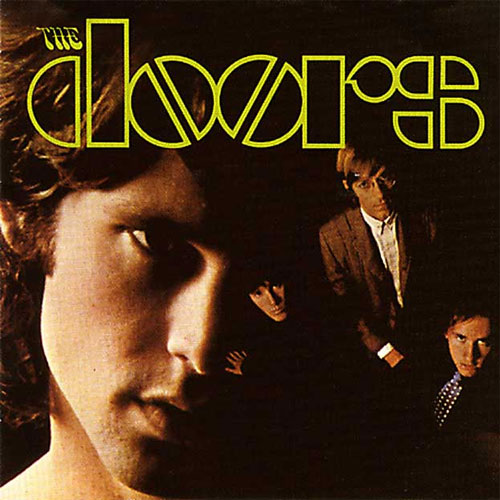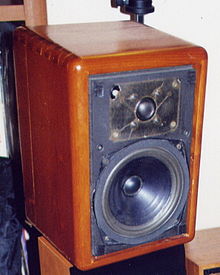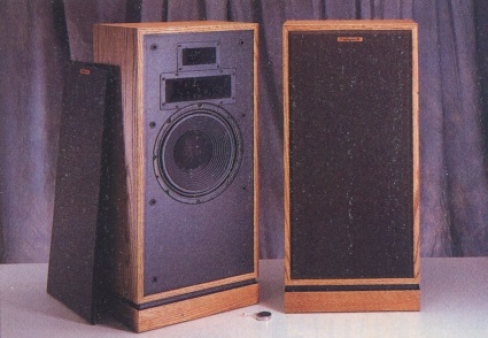 I’ve been spending a lot of time listening to two fundamentally different sounding systems. They
I’ve been spending a lot of time listening to two fundamentally different sounding systems. They
are both my reference system; the only difference being which of two cartridges I am using. The reason for this is that I’m in the middle of reviewing the DS Audio Master 1 Optical Cartridge and it’s massive preamp/equalizer. Even more amazing the differences may come down to cantilever material and stylus shape. Still, these two fundamentally different sounds have set met to pondering what I want from a music reproduction system. So this isn’t a review of the Master 1, but a column about what I want from my system. The review will come soon.
I want to say that these two sounds are fundamentally different but in many ways quite close. In other words, it would be easy for me to live with either in my system, but I do prefer one over the other. The fundamental difference comes on a couple of fronts. One is tonally rich and emotionally beautiful. The other has a huge soundstage, is incredibly transparent, very quick and very detailed. Neither is significantly deficient in any of the areas the other is strong in, but they do emphasize different ways of bringing sound and music into my room.
The first is a sound that several audiophile friends who are familiar my system say is the best I have ever heard from my system. The sound is more transparent, has a more three-dimensional soundstage, images better, has quicker micro-dynamics, bigger overall dynamics and runs quieter in the groves than any I have ever had from my system. You can hear every little detail and breath on the recording. You can pick out the precise place of instruments and background vocalist. It simply has the biggest WOW factor I have ever heard in my listening room.
The second sound is made up of deeper textures, colors, and tones. The sound was bolder, more focused and more solid. It doesn’t have quite the WOW factor, but it sounds so much like music being played live. To go back to Harry Pearson’s Yin (tending toward dark) to Yang (sunlit to bright) comparison, the second sound surely falls on the Yin side and the first sound on the Yang side.
As I have spent time with these two wonderful systems, I have started to re-evaluate what I want from my music reproduction system. I freely admit that has changed over time and I’m not suggesting that my desires should be the same as yours. I do want to urge you to ask the same question. Maybe I suggest asking the question another way, “What would I want from my system if I had never read an audio mag or blog? What if I chose the sound just based on the music I love most?”
Now don’t misunderstand me I have had years of enjoyment from reading my favorite audio writers; Harry Pearson, J. Gordan Holt, Anthony Cordesman, Art Dudley, David Robinson, and Jeff Day to name a few of my favorites. I have and continue to learn from them. The problem is there is a basic flaw in human beings or at least a lot of us. I use to go to conference on how to grow your organization; every time the leader would warn if you go back and do all of this at once you will get fired. Still, I personally know people who did exactly that, and yes they got fired. This is what happened to lots of us; you know dedicated audiophiles.
 For example, I got into hifi because I was exposed to it in high school but my goal was to listen to Led Zeppelin, The Doors and you fill in the rest. I was happy with speakers that sounded like music; my stacked Quad ESLs for example. Then I begin to look for speakers that had more bass, and I begin to visit the high-end dealers in Dallas. I should have listened to Gene at Hillcrest High Fidelity when he told me the Quads were a lifetime speaker.
For example, I got into hifi because I was exposed to it in high school but my goal was to listen to Led Zeppelin, The Doors and you fill in the rest. I was happy with speakers that sounded like music; my stacked Quad ESLs for example. Then I begin to look for speakers that had more bass, and I begin to visit the high-end dealers in Dallas. I should have listened to Gene at Hillcrest High Fidelity when he told me the Quads were a lifetime speaker.
 Then one day I went into a new high-end store and heard a pair of what they called mini-monitors from a company called Cizek. The speaker I heard was the Cizek KOA; it had beautifully dovetailed cabinets, but most of all it allowed me to hear what Harry Pearson had been calling a soundstage. The speakers were on tall stands, sitting out in the middle of the room and the sound floated way behind the speakers and way beyond the outer sides of the speakers. I had never heard anything like that, and I begin to feel that’s what my system was missing.
Then one day I went into a new high-end store and heard a pair of what they called mini-monitors from a company called Cizek. The speaker I heard was the Cizek KOA; it had beautifully dovetailed cabinets, but most of all it allowed me to hear what Harry Pearson had been calling a soundstage. The speakers were on tall stands, sitting out in the middle of the room and the sound floated way behind the speakers and way beyond the outer sides of the speakers. I had never heard anything like that, and I begin to feel that’s what my system was missing.
Now don’t get me wrong, I’m not anti-soundstage. A really well-done soundstage adds a lot to the realism to listening to recorded music, but for me, it’s not the most important thing. I first begin to notice this when I was in my 40s. I walked into a television/home theater store to make a decision on which tv to buy.  They had a room with McIntosh gear playing over a pair of Klipsch Fortes, and I couldn’t believe how the music moved me emotionally. I’ve been struggling with this ever since. So now I have from my own system two different sounds based on two different cartridges and the question which sound allows me to enjoy music more. That is the point of a hifi system after all. It doesn’t matter which is better; it matters which do I enjoy my favorite music over. This should be the question I feel rather than how it sounds.
They had a room with McIntosh gear playing over a pair of Klipsch Fortes, and I couldn’t believe how the music moved me emotionally. I’ve been struggling with this ever since. So now I have from my own system two different sounds based on two different cartridges and the question which sound allows me to enjoy music more. That is the point of a hifi system after all. It doesn’t matter which is better; it matters which do I enjoy my favorite music over. This should be the question I feel rather than how it sounds.
Seems as I’ve gotten older I have become a bit more of a timbral listener than is typical for a lot of American and European audiophiles. I don’t think I’ve moved quite as much in directions as say Jeff Day or Art Dudley, but still, I’m sure I’ve moved further in that direction than most. I just don’t care as much about a huge soundstage; truth is when I go to most live events it sounds more like great mono than and audiophile soundstage. I want a soundstage that adds to the musical performance not that make me take notice of it. I want a soundstage that is coherent and holistic not one that has instrument and notes floating in space.
Temporal realism may be the most important and hardest thing to achieve in a music reproduction system. Over the years I have come to realize that one of the reasons it is so easy to tell live music from recorded music has to do with timing. I often talk about Pace, Rhythm, and Timing. Music played back on an audio system seldom seems to get the timing and flow of music correct. I think a music reproduction needs to do this both on the overall sound of the performers as they play together and with each performer.
What has become important to me is the way my system reproduces layers, textures, colors, tones and the overtones in the performance. I like to deeply feel the beauty and expressiveness of the music and the performers. This sense of emotional reality really only happens when a system can convey the full tonal color of the music.
I started off this column by saying that I been listening to two fundamentally different sounding systems and that they were both my reference system; the only difference being which of two cartridges. This experience has led to a shift in my hierarchy of music reproduction. For the first time in my memory, I prefer the option that is slightly less transparent. I have always highly valued the ability of a system to allow me to feel like I could see into the recording and onto the performance.
So, I was surprised when the cartridge I preferred was slightly less transparent, slightly less detailed, had a smaller soundstage and other sonic qualities. I was not surprised that the cartridge I chose had bolder tones and colors, and had slightly better PRaT. So there you have it, I discovered one more time that you can’t have everything, so it’s important to know what you really want.

I just wonder what my system would look like if I had not listened to that Beatnik guy…
Well, that was the point!